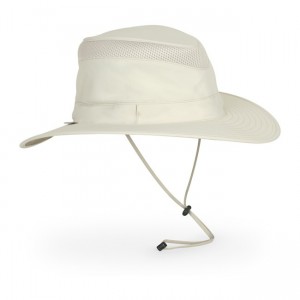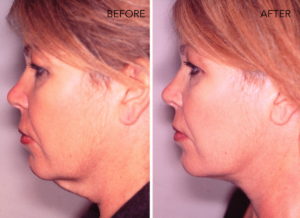
Preventive measures can reduce the chances that you will be one of the 20% of Americans who will develop skin cancer in their lifetime. Although being diligent about taking precautions can be challenging, reducing your exposure to sun beginning at a young age is the single most important step you can take. UVA and UVB radiation causes damage to the DNA of skin cells which results in genetic changes that can produce skin cancer.
Prevention
Here are some methods to protect yourself from the primary cause of skin cancer, UVA and UVB exposure:
Sunscreen: Physical sunscreens like eltaMD provide long lasting UVA & UVB protection by utilizing microfine, transparent zinc oxide. Daily use is advised as your skin is subject to the effects of UV rays even on cloudy days in winter.
Limit direct sun exposure – UV rays are strongest when the sun is high in the sky, usually between the hours of 10am and 4pm. Try to schedule activities to avoid being outdoors for too long during these peak hours.
Cover up – Use protective clothing when you are in the sun at the peak exposure hours. Specialized fabrics by companies like SunDayAfternoons, provide UV-rated protection for your skin.


Wear a hat – A 2- to 3-inch brim all around will protect areas such as the ears, eyes, forehead, nose, and scalp that are often exposed to intense sun. These are known high risk areas for the development of skin cancer.
Wear sunglasses – UV-blocking sunglasses are important for protecting the delicate skin around the eyes, as well as the eyes themselves. Your chance of developing eye disease is increased by long hours in the sun without protection.
Avoid tanning beds – The cumulative effect of exposure to the ultraviolet rays used in tanning beds can increase the risk of developing melanoma by as much as 75% when tanning is started before ag
e 35.
Treatment
If you take the time to become familiar with your skin, you will be able to more easily identify any changes that occur at an early stage. Many skin cancers can be detected when they first start if the skin is monitored on a regular basis. A self-exam is best done with good lighting and a full-length mirror. You should learn the appearance and pattern of any moles, blemishes, freckles, or other marks on your skin so that any changes will be apparent to you the next time you do a body check. Any area that concerns you should be brought to the attention of your physician. You should also ask your physician if your specific skin type and risk factors warrants an annual body check by a dermatologist.
If skin cancer is suspected, a skin biopsy will usually be performed. An excisional procedure may be all that is needed. A specialized technique called Mohs surgery may be used to examine the tissue at the time of the excision. This enables the removal of all cancer cells while sparing as much uninvolved tissue adjacent to the cancer as possible. Reconstruction is performed to minimize any cosmetic defects as a result of the cancer treatment. For cancers such as melanoma that might be more extensive, tests to determine any spreading of the cancer may be recommended. Chemotherapy, immunotherapy, radiation, or additional surgery might be needed if other organ systems are affected.
Tags: basal call carcinoma, melanoma, Mohs surgery, skin cancer, squamous cell carcinoma, sunscreen
Written by Dr. Forley on July 5, 2013




